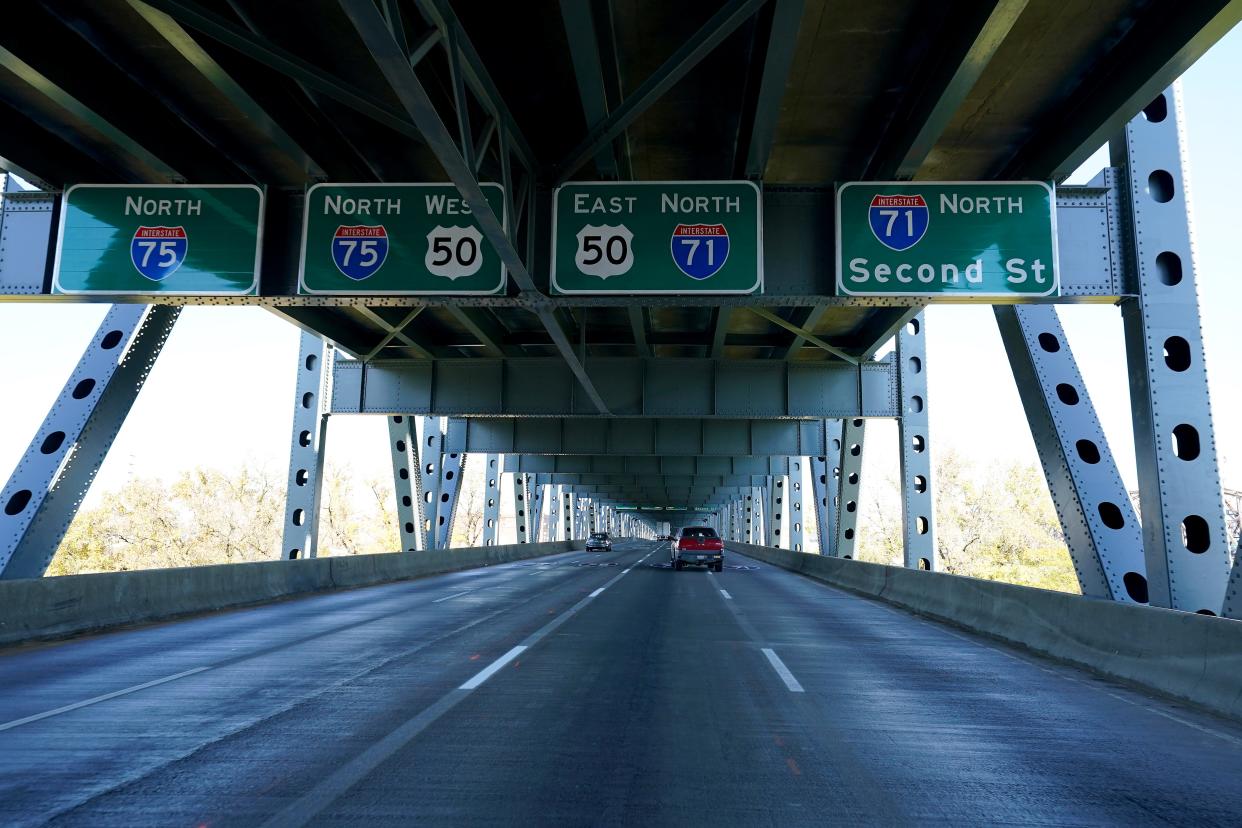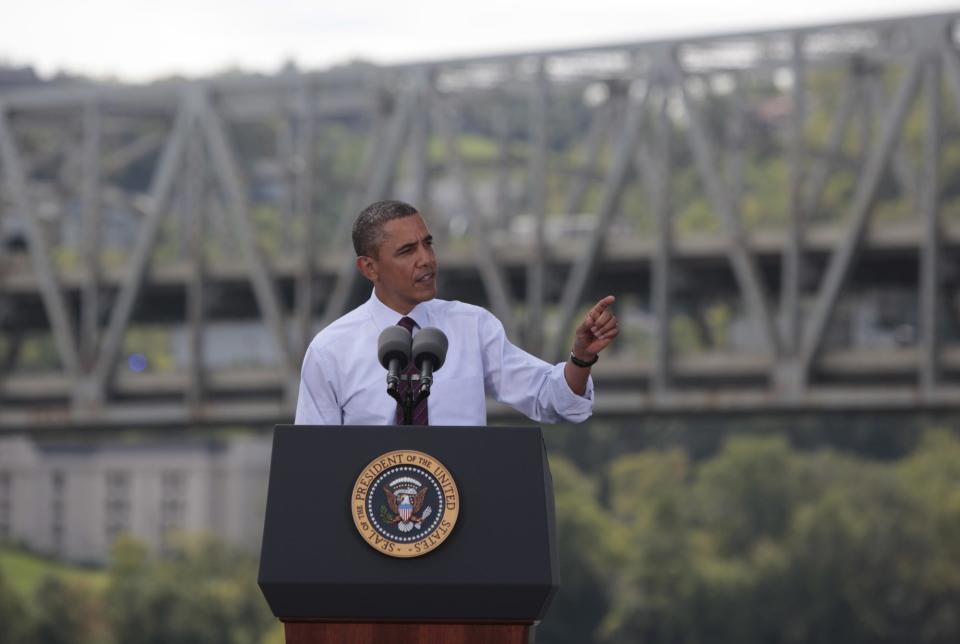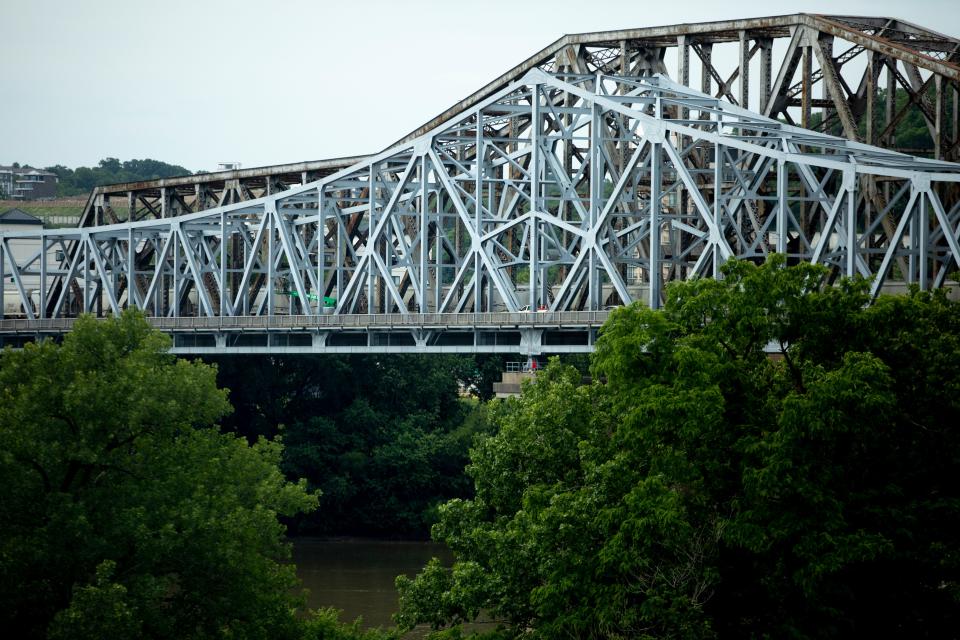Opinion: City Hall needs to get engaged with Brent Spence Corridor project

Two billion eight hundred million dollars. That is the expected cost of the Brent Spence Corridor project. To put that figure into perspective, $2.8 billion could fund the city of Cincinnati's entire budget for nearly two years; it could pay for 11 TQL Stadiums or 19 streetcar projects; or, it could install the decks that were recently proposed over Fort Washington Way 25 times over.
It makes sense to think that such a long-awaited project will be transformational for our community. After all, three sitting U.S. presidents have come to town to talk about the Brent Spence. Without intervention however, after this once-in-a-lifetime influx of federal money is spent, and after years of disruptive construction are endured, our community is going to be left wondering: Is that it?
The current designs for the Brent Spence Corridor project essentially replicate the existing highway layout that forms the western border of downtown Cincinnati. This layout was designed in the 1950s, and when constructed in the 1960s, it landlocked our downtown and displaced thousands of residents, most of whom were Black. By taking the same, antiquated approach, the current designs miss a major opportunity to reshape how this critical infrastructure interacts with our region’s urban core.

The Bridge Forward proposal published earlier this year started a great conversation about what might be possible with the Brent Spence project: tens of acres of land returned to the city; better local connections between downtown, Queensgate and the West End; improved pedestrian and bicycle safety; the accommodation of urban and economic development projects. If our region wants to be competitive with peer regions, we must provide a large, top-tier urban core for those who desire to live or work in one. In this sense, getting the Brent Spence project right is a must.
Fortunately, City Hall leadership still has the power to get engaged on this project and drive an outcome that is much, much better for Cincinnati. Here are three important avenues:
First, the Ohio Department of Transportation is planning to use what is called a "progressive design-build" method of delivery for this project. This means that the contractor who will build the project will also have a large hand in designing the project. If City Hall were to decide soon upon a set of measurable, local priorities for the project − such as land recapture and improved east-west connectivity − those priorities could make their way into the selection criteria for the design-build contractor. This would harness the power of the private market to innovate, and contractors who bid on the project would be incentivized to propose design thinking that directly addresses the city’s priorities.
Second, this summer, ODOT officially launched an intensive effort, known as a "Supplemental EA," to collect public feedback on the project. ODOT has pledged to earnestly review and act on public comments provided by individuals, organizations and community councils. Of course, public comments are most useful when they are uniform. Fortunately, the people’s representatives in City Hall can, and should, speak about local priorities with one voice − a voice that carries weight − during this critical phase of the project’s development.

Third, City Hall can expect to find helpful partners at the national level. USDOT’s stated priorities for projects awarded MEGA grants, which will be an important source of capital funding for the project, are far more expansive than what the current Brent Spence designs would deliver. Federal leadership has a significant interest in delivering transformative projects that advance pedestrian safety, that improve connectivity between neighborhoods separated by interstates, and that integrate transportation projects with land use and economic development priorities. City Hall should engage with USDOT and other national experts now to ensure that the best possible product gets delivered to our community.
If any doubts exist about whether all of this is possible, just look to Covington. There, city leadership engaged with the Kentucky Transportation Cabinet to win the opportunity for design changes on the Kentucky side of the river, all of which are aimed at improving local quality of life. Covington started negotiations to align the project’s interchanges with local neighborhood plans, ensured that fixing a long-standing, severe stormwater issue will be included in the scope of the project, and secured funding for a full-time city employee who will represent Covington’s interests in the project for the next five years.
None of the ideas suggested here have to impact the project’s funding or groundbreaking date. However, the project’s long-term benefits to our local community, and the true nature of the young leadership at City Hall, are both yet to be determined. Will City Hall seize on this opportunity, or let it slip?
Ryan is a Cincinnatian by identity currently living in Columbus, Ohio. His background is in civil engineering and city planning.
This article originally appeared on Cincinnati Enquirer: Opinion: City Hall needs to get engaged with Brent Spence Corridor project

